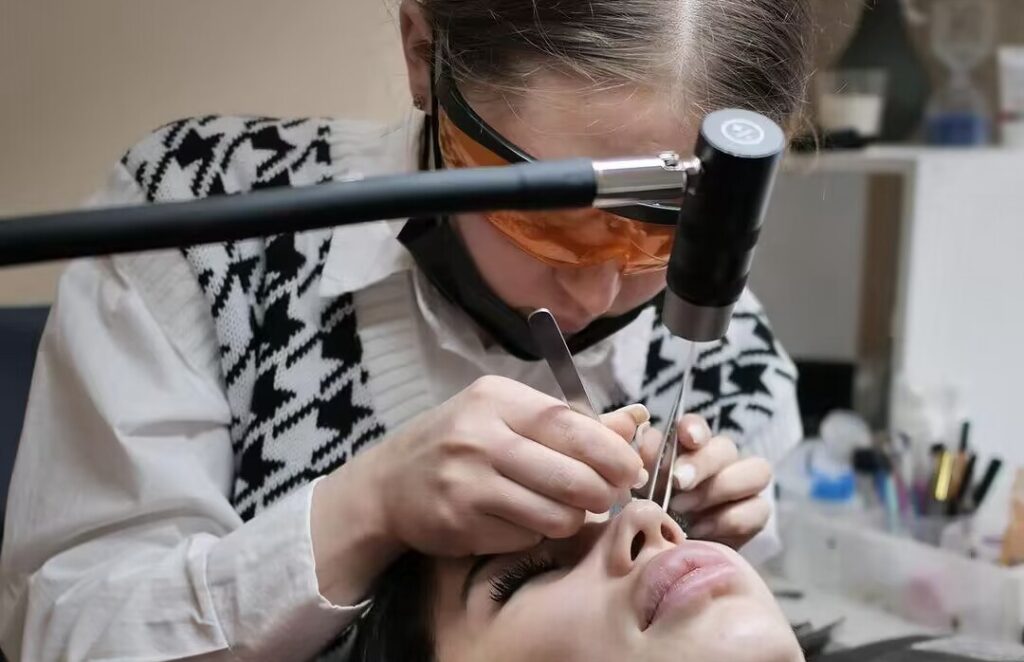Introduction
Understanding the differences between UVA, UVB, and UVC light is crucial for various applications, from healthcare to industrial uses. UV light, though invisible to the naked eye, plays a significant role in our daily lives and industries. This article delves into the unique properties, health impacts, and applications of each type of UV light, providing a comprehensive guide to UV technology.
What is UV Light?
Ultraviolet (UV) light is a form of electromagnetic radiation with wavelengths shorter than visible light but longer than X-rays. UV light is divided into several categories based on its wavelength, each with distinct characteristics and uses.
Classification of UV Light
UV light is classified into three primary types based on their wavelengths:
- Longwave UVA (320nm-400nm)
- Mediumwave UVB (275nm-320nm)
- Shortwave UVC (200nm-275nm)

Does purple light at 395-400nm hurt?
Wavelengths in the range of 395-400nm fall into the violet light spectrum, just beyond the ultraviolet (UV) range. While ultraviolet light typically covers wavelengths between 100-400nm and is known for its potential to cause harm to the skin and eyes, the 395-400nm wavelength is technically outside of this range. Despite not being classified as UV light, prolonged exposure to violet light within this range can still pose risks to both the eyes and skin.
For instance, continuous exposure to 395-400nm light may lead to eye discomfort, including symptoms such as eye strain, dryness, and irritation. This is particularly concerning for individuals who work with devices emitting violet light for extended periods, as it can contribute to visual fatigue and potential long-term effects on eye health. Similarly, while the skin is generally less sensitive to violet light than to UV rays, there is still a potential for adverse reactions with long-term exposure.
To mitigate these risks, it is advisable to take protective measures when working with or around devices that emit light in this wavelength range. Wearing protective eyewear designed to filter out violet light, reducing exposure time, and ensuring that the light intensity is kept at safe levels are all effective strategies to protect oneself from potential harm. Although 395-400nm light is not as hazardous as UV radiation, taking precautions can help prevent discomfort and ensure safety over time.

Longwave UVA
Characteristics of UVA
UVA rays have wavelengths between 320nm and 400nm. Known for their strong penetration ability, they can pass through glass and even nine feet of water. UVA is present all year round, regardless of the weather or time of day.
Penetration Ability of UVA
UVA’s long wavelengths enable it to penetrate deep into the skin, affecting the dermis layer, where collagen and elastin fibers reside.
Presence of UVA in Daily Life
UVA constitutes over 95% of the UV radiation reaching the Earth’s surface, making it the most prevalent form of UV radiation we encounter.
Effects of UVA on Human Health
Impact on Skin Collagen and Elastin
UVA rays can severely damage collagen and elastin fibers in the skin, leading to premature aging. The damage manifests as wrinkles, sagging skin, and the appearance of fine lines.
Long-Term Skin Damage and Aging
Prolonged exposure to UVA rays can cause chronic skin damage, often referred to as photoaging. This includes the formation of age spots and hyperpigmentation.
Immediate Effects such as Tanning and Dark Spots
UVA can stimulate melanin production, causing the skin to tan. However, this also leads to the formation of dark spots and an uneven skin tone.
Applications of UVA
Insect Traps
UVA light at a wavelength of 360nm is effective in attracting insects, making it useful in insect traps.
Mineral Identification
Special UVA lamps can aid in identifying minerals by causing them to fluoresce under UV light.
Stage Decoration and Currency Verification
UVA lights are used in stage decoration and for verifying the authenticity of banknotes due to their ability to make certain materials glow.
Mediumwave UVB
Characteristics of UVB
UVB rays have wavelengths between 275nm and 320nm. They have moderate penetration ability and are partially absorbed by the ozone layer.
Penetration Ability of UVB
UVB rays can penetrate the epidermis, the outermost layer of the skin, but are mostly absorbed before reaching deeper layers.
Seasonal and Daily Variations in UVB Intensity
The intensity of UVB rays varies with the seasons and time of day, being strongest during the summer and midday.
Effects of UVB on Human Health
Oxidation of Skin Lipids
Exposure to UVB can oxidize lipids in the skin, leading to dryness and damage to the skin barrier.
Sunburn and Skin Inflammation
UVB is primarily responsible for sunburn, causing redness, pain, and inflammation of the skin.
Long-Term Risks such as Skin Cancer
Long-term exposure to UVB can increase the risk of skin cancer, including melanoma and other types of skin malignancies.
Applications of UVB
Health Lamps
UVB health lamps are used to treat conditions like psoriasis and vitiligo by promoting skin regeneration.
Plant Growth Lights
UVB lights can stimulate plant growth by enhancing photosynthesis and increasing nutrient uptake.
Shortwave UVC
Characteristics of UVC
UVC rays have wavelengths between 200nm and 275nm. They have the shortest wavelength and highest energy among UV rays but are mostly absorbed by the Earth’s ozone layer.
Penetration Ability of UVC
UVC rays have very low penetration ability and cannot pass through most types of glass and plastic.
Natural Filtration by the Ozone Layer
The ozone layer effectively filters out UVC rays, preventing them from reaching the Earth’s surface.
Effects of UVC on Human Health
Potential Harm if Directly Exposed
Although UVC does not reach the Earth’s surface, artificial UVC sources can cause severe skin and eye damage upon direct exposure.
Short-Term and Long-Term Health Risks
Short-term exposure to UVC can cause burns, while long-term exposure can lead to an increased risk of skin cancer and other health issues.
Applications of UVC
Hospital Sterilization
UVC light is widely used for sterilizing medical equipment and surfaces in hospitals.
HVAC Systems
In HVAC systems, UVC lights help to disinfect air and prevent the spread of airborne pathogens.
Disinfection in Various Industries
UVC light is used for disinfection in water treatment plants, food and beverage processing, and other industries requiring stringent hygiene standards.
Comparison of UV Light Types
Summary of Differences in Characteristics and Applications
Each type of UV light has unique characteristics and specific applications. UVA is best for applications requiring deeper penetration, UVB for surface-level effects, and UVC for sterilization.
Effectiveness of Each Type in Various Uses
The effectiveness of UV light depends on its wavelength and the intended application, with UVC being the most effective for germicidal purposes.
UV LED Technology
Advancements in UV LED
UV LED technology has advanced significantly, offering longer lifespans and more energy-efficient solutions compared to traditional mercury lamps.
Benefits of UV LED over Traditional Mercury Lamps
UV LEDs are more environmentally friendly, have faster start times, and can be tailored for specific applications, making them superior to mercury lamps.
Conclusion
Understanding the differences between UVA, UVB, and UVC light is essential for leveraging their unique properties in various applications. With advancements in UV LED technology, the future looks bright for more efficient and environmentally friendly UV solutions.
FAQs
- What are the main differences between UVA, UVB, and UVC light?
- UVA has the longest wavelength and penetrates deep into the skin, UVB causes sunburn and affects the epidermis, while UVC is primarily used for sterilization and has the shortest wavelength.
- Can UVA light cause skin cancer?
- Prolonged exposure to UVA can lead to skin damage and increase the risk of skin cancer, although UVB is more directly associated with cancer.
- Why is UVC not commonly encountered in daily life?
- UVC is mostly absorbed by the Earth’s ozone layer and does not reach the surface. It is primarily used in artificial applications for disinfection.
- What are the benefits of UV LED technology?
- UV LEDs are more energy-efficient, have longer lifespans, are environmentally friendly, and can be customized for specific uses.
- How does UVB light affect plant growth?
- UVB light can enhance photosynthesis, improve nutrient uptake, and promote overall plant health and growth.


